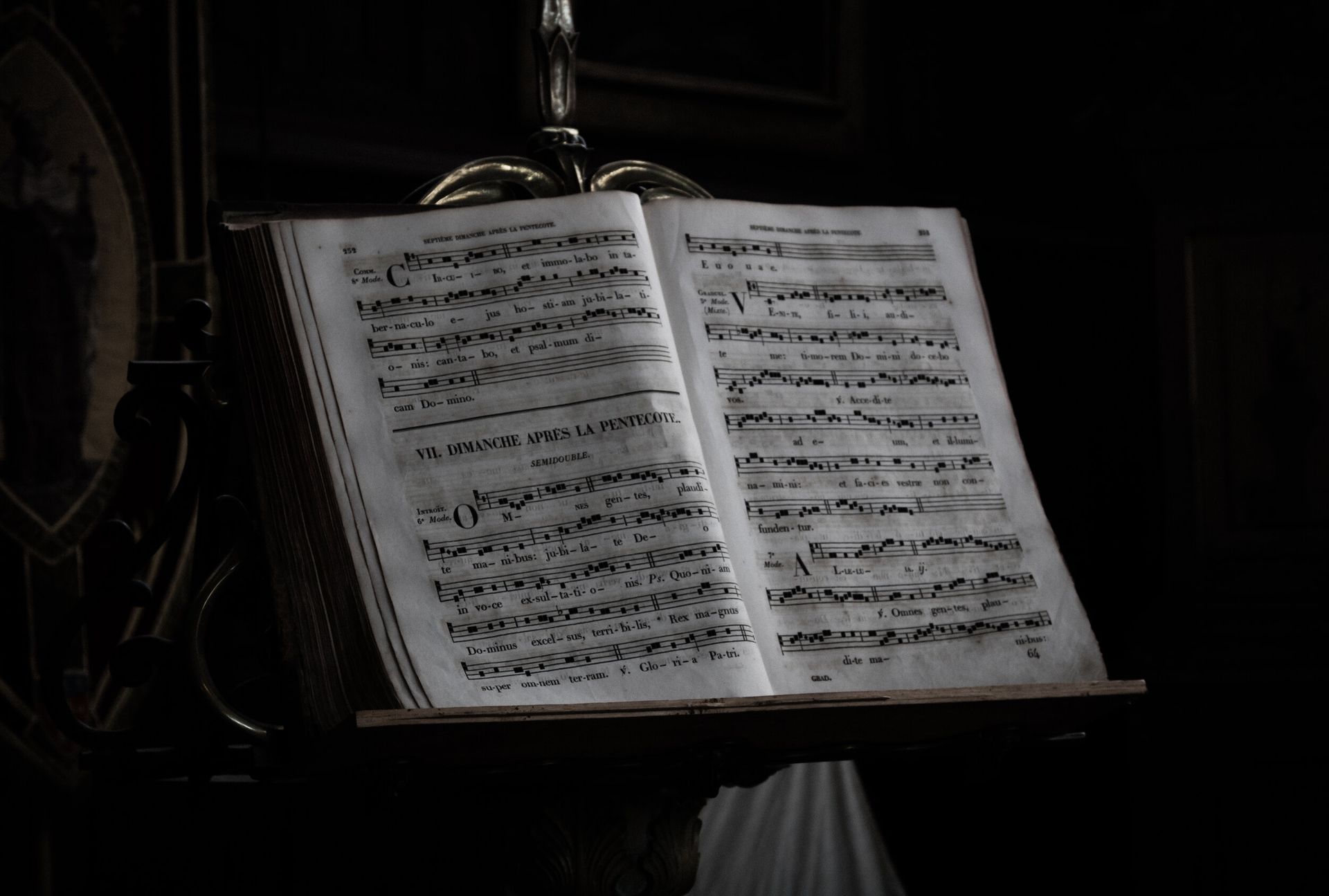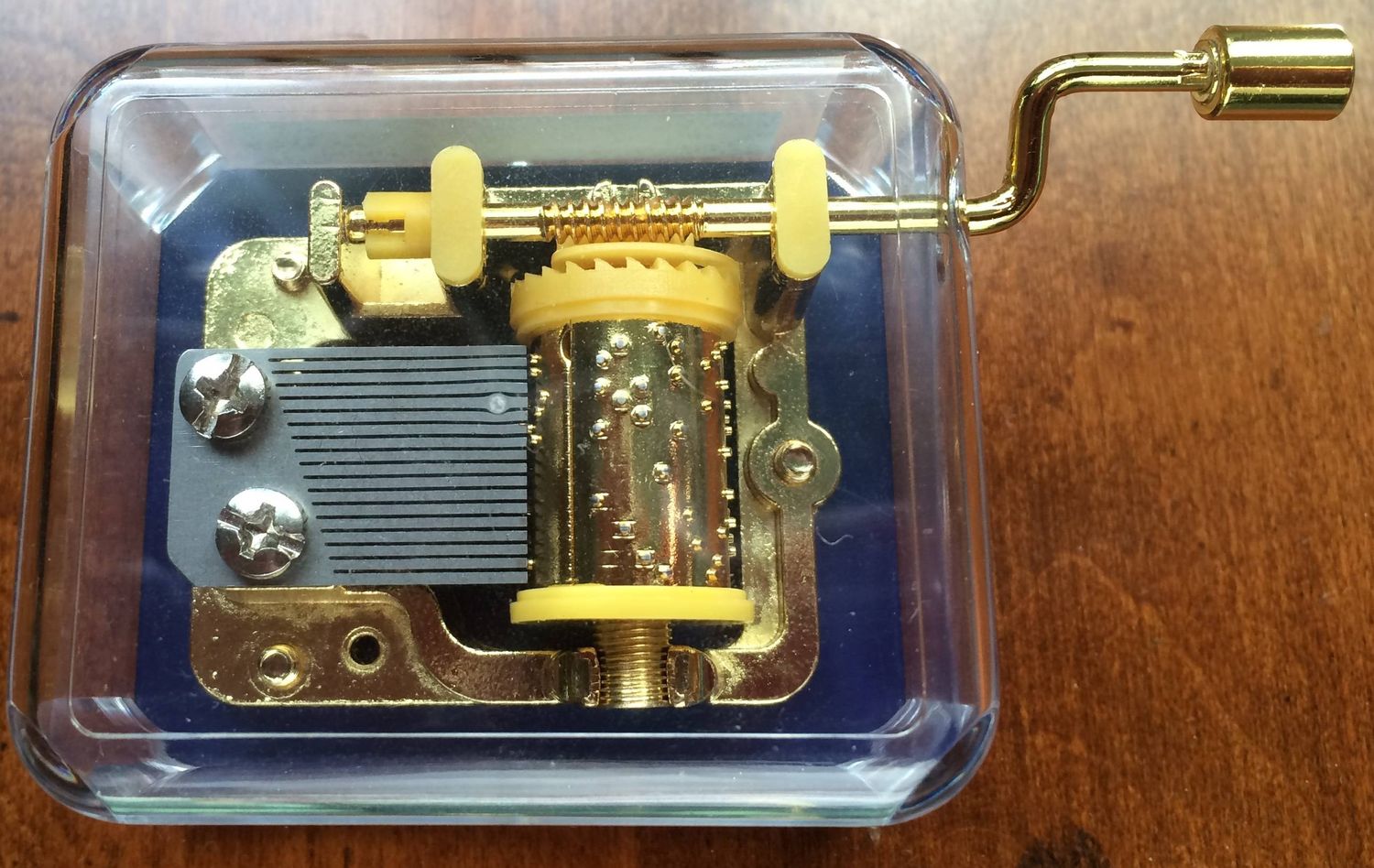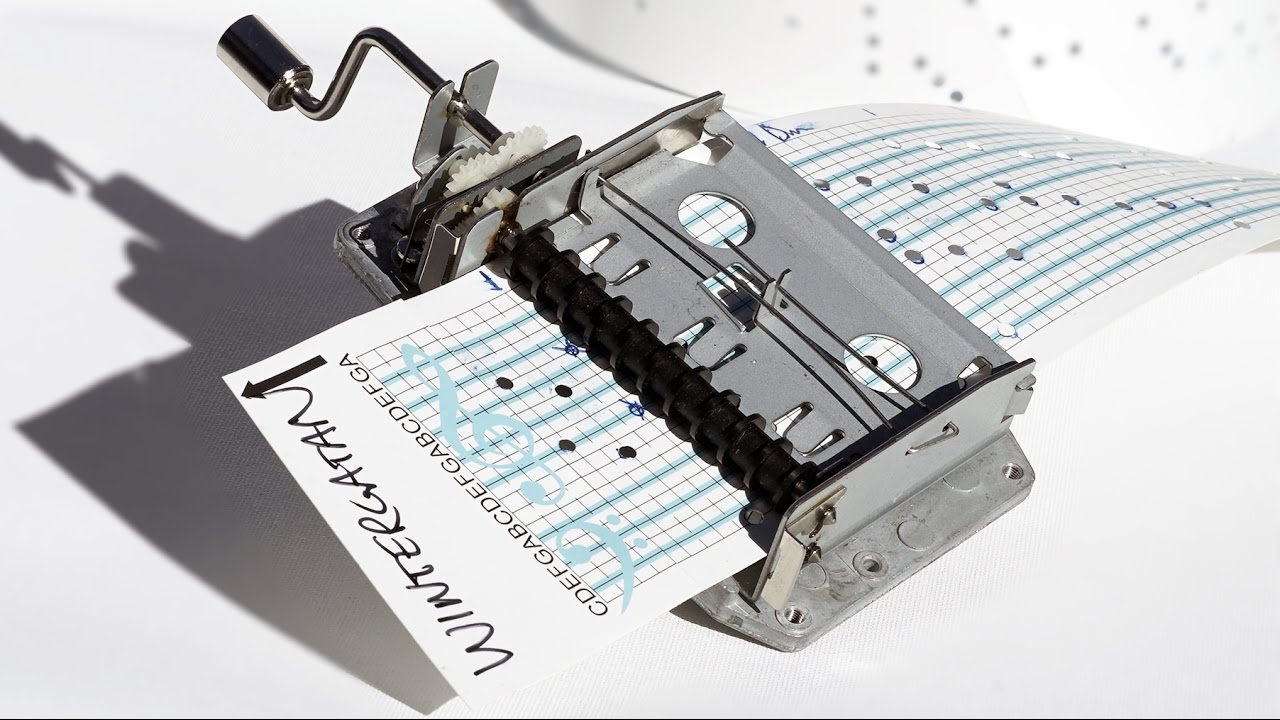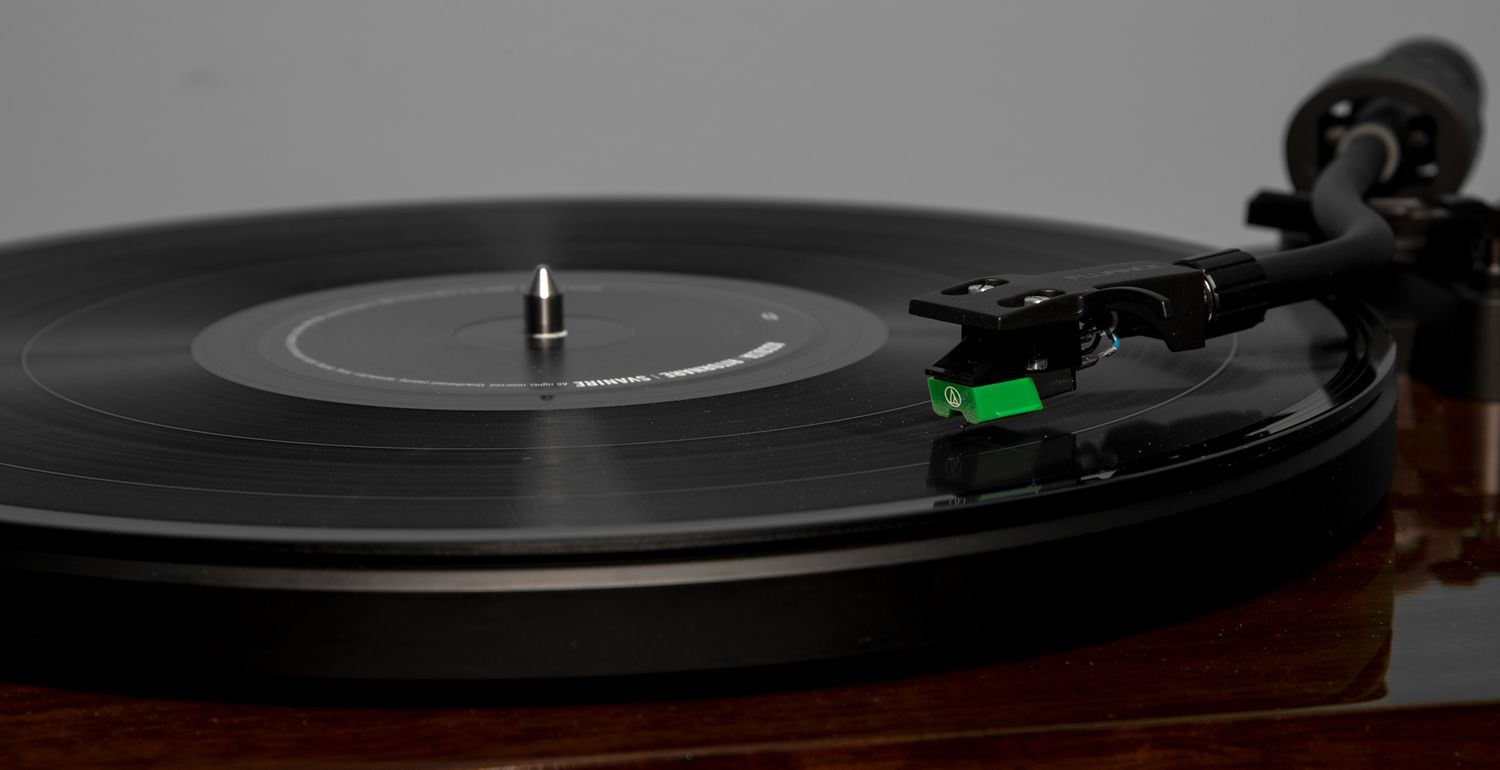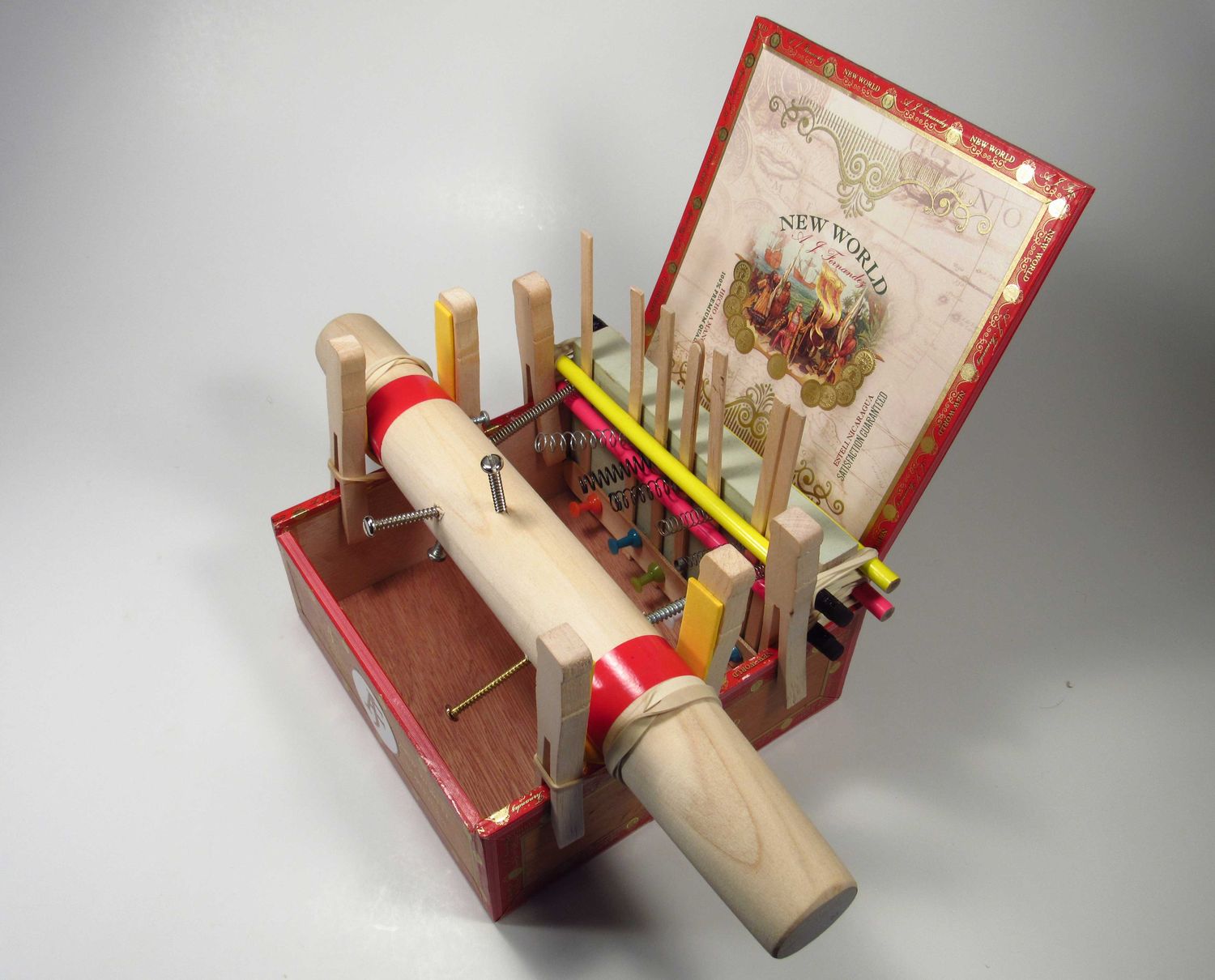Home>Devices & Equipment>Music Box>How Long Does A Music Box Play
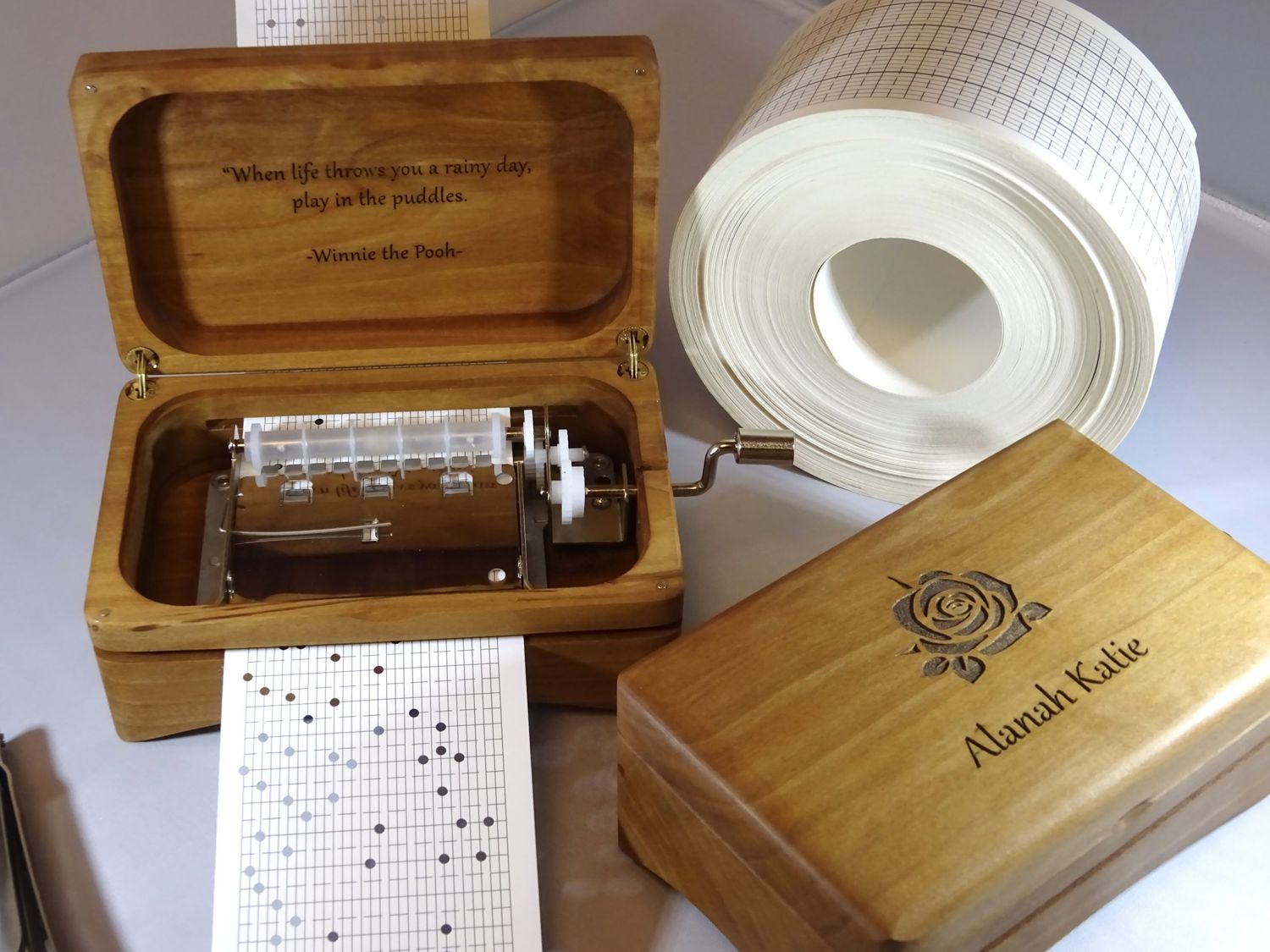

Music Box
How Long Does A Music Box Play
Modified: January 22, 2024
Discover how long a music box plays and explore the enchantment of this timeless instrument. Explore the world of music boxes and their captivating melodies.
(Many of the links in this article redirect to a specific reviewed product. Your purchase of these products through affiliate links helps to generate commission for AudioLover.com, at no extra cost. Learn more)
Table of Contents
Introduction
A music box is a charming and nostalgic device that has been captivating people for centuries. With its delicate melodies and intricate movements, a music box can evoke feelings of joy, nostalgia, and tranquility. But have you ever wondered how long a music box can play its enchanting tunes before it winds down? In this article, we will delve into the fascinating world of music boxes and explore the factors that determine their playtime.
Music boxes have a rich history that dates back several centuries. Originating in the late 18th century, these mechanical devices were marvels of craftsmanship and ingenuity. Although they have evolved over time, the basic principle remains the same – a carefully designed mechanism creates sound by plucking tuned metal teeth or striking metal pins on a rotating cylinder or disc.
Music boxes are made up of several key components, including the comb, cylinder or disc, governor, and winding mechanism. The comb consists of a series of metal teeth of varying lengths, which are responsible for producing the different notes. The cylinder or disc contains the pins or raised bumps that trigger the teeth, determining the melody played. The governor helps regulate the speed at which the mechanism operates, while the winding mechanism is used to wind up the spring that powers the music box.
The duration of a music box’s playtime can vary depending on various factors. One of the primary factors is the size and design of the music box. Larger music boxes generally have longer playtimes due to their larger cylinders or discs, allowing for more music to be programmed. Additionally, the quality and condition of the components can also impact playtime. A well-maintained music box with high-quality materials is likely to have a more extended playtime compared to one with worn-out or damaged components.
Other factors that can affect the playtime of a music box include the tension and elasticity of the spring, the efficiency of the winding mechanism, and the overall mechanical condition of the device. Each music box is unique, and these factors can vary from one to another, influencing the duration of playtime.
Mechanism of a Music Box
The mechanism of a music box is what brings it to life, creating the mesmerizing melodies that we all love to hear. Understanding how a music box works can deepen our appreciation for this intricate device.
At the heart of a music box is the comb, a metal strip with several tuned teeth. The comb is mounted on a soundboard, which amplifies the vibrations created when the teeth are struck. Each tooth on the comb corresponds to a specific musical note, producing a harmonious melody when played in sequence.
The comb is activated by a rotating cylinder or disc, which is studded with pins or bumps. As the cylinder or disc rotates, these pins or bumps come into contact with the teeth of the comb, causing them to vibrate and produce sound. The arrangement of the pins determines the melody that the music box plays.
The cylinder or disc is connected to a winding mechanism, usually in the form of a key or crank. When the key or crank is turned, it winds up a spiral spring inside the music box. This spring is the source of power that drives the entire mechanism.
As the spring gradually unwinds, its tension is transmitted to a gear train, which controls the speed at which the cylinder or disc rotates. This gear train includes various gears and levers that work together to ensure smooth and precise movement.
Another crucial component of the music box mechanism is the governor. The governor is responsible for regulating the speed of the mechanism by controlling the rate at which the spring unwinds. It achieves this by utilizing a set of rotating arms equipped with weights. As the mechanism turns, the rotating arms encounter air resistance, causing them to spin faster or slower to maintain a consistent speed.
Overall, the mechanism of a music box is a delicate and intricate system of precision-engineered parts. The careful interplay between the comb, cylinder or disc, winding mechanism, gears, and governor results in the magical music that emanates from the box.
Components of a Music Box
A music box is a complex device that consists of several essential components working together to produce its enchanting melodies. Understanding these components can give us a deeper appreciation for the craftsmanship and ingenuity behind these cherished instruments.
1. Comb: The comb is the heart and soul of a music box. It is a metal strip with numerous tuned teeth of varying lengths. When the teeth are plucked or struck, they produce specific musical notes. The comb is typically made of high-quality metal to ensure clear and resonant sounds.
2. Cylinder or Disc: The cylinder or disc is the part of the music box that contains the pins or raised bumps. These pins or bumps are strategically arranged to correspond to the specific notes on the comb. As the cylinder or disc rotates, the pins or bumps come into contact with the teeth of the comb, setting off a chain reaction of beautiful melodies.
3. Winding Mechanism: The winding mechanism is what powers the music box. It usually consists of a key or crank that is turned to wind up a spiral spring inside the box. As the spring unwinds, it releases the stored energy, allowing the mechanism to operate and produce music.
4. Gear Train: The gear train is a system of gears and levers that transmit the energy from the unwinding spring to the components that produce the music. It ensures that the rotary motion from the spring is transformed into the precise movement necessary to activate the comb and produce the desired melody.
5. Governor: The governor regulates the speed at which the music box plays. It consists of rotating arms with small weights attached to them. As the mechanism turns, the rotating arms encounter air resistance, causing them to spin faster or slower. This adjustment maintains a consistent speed and prevents the music from playing too fast or too slow.
6. Soundboard: The soundboard is a wooden or metal surface on which the comb is mounted. It acts as an amplifier, enhancing the vibrations created by the teeth of the comb and allowing the music to resonate more effectively.
These components, along with various smaller parts and mechanisms, work harmoniously to create the captivating melodies that we associate with music boxes. The craftsmanship and precision required to design and assemble these components demonstrate the artistry and dedication involved in the creation of these timeless music-making devices.
Duration of a Music Box’s Playtime
The playtime of a music box refers to how long it will continue playing its melodies before requiring rewinding. The duration can vary depending on different factors, including the size and design of the music box, the type of music mechanism, and the condition of the components.
A general range for the playtime of a music box is between 1 to 3 minutes, although it can be shorter or longer depending on the specific music box. Smaller music boxes with compact mechanisms tend to have shorter playtimes, while larger ones with more extensive cylinders or discs can play for a longer duration.
The type of music mechanism in a music box also affects the playtime. Traditional music boxes typically have a single tune mechanism, meaning they play a single melody before coming to a stop. On the other hand, some music boxes have interchangeable cylinders or discs, allowing for a variety of melodies to be played in succession, extending the playtime.
The condition of the music box’s components is crucial for the playtime as well. Well-maintained music boxes with properly lubricated and adjusted mechanisms typically have longer playtimes. If the components are worn out or damaged, it can affect the smooth operation of the mechanism, resulting in a shorter playtime.
It’s important to note that the playtime of a music box is not solely determined by the winding mechanism but also by the arrangement of the pins or bumps on the cylinder or disc. The number and placement of the pins or bumps can affect the duration of each melody played before the mechanism comes to a halt.
Ultimately, the playtime of a music box adds to its charm and uniqueness. While some music boxes may have a short playtime, they make up for it with their intricate designs and ornate craftsmanship. Others may have a longer playtime, allowing for extended enjoyment of the melodies. Regardless of the duration, the enchanting tunes produced by a music box can transport us to a world of nostalgia and delight.
Factors Affecting Playtime
Several factors can influence the playtime of a music box, determining how long it will continue playing its melodies before winding down. Understanding these factors can help you better appreciate and manage the playtime of your music box.
1. Size and Design: The size and design of a music box can significantly impact its playtime. Larger music boxes tend to have more substantial cylinders or discs, allowing for a greater number of pins or bumps. This allows for a longer sequence of melodies to be played before the mechanism stops. Conversely, smaller music boxes with more compact mechanisms may have shorter playtimes.
2. Type of Mechanism: The type of music mechanism in a music box can also affect its playtime. Traditional music boxes with a single tune mechanism play one melody before stopping. However, some music boxes have interchangeable cylinders or discs that enable multiple melodies to be played in succession. This can extend the playtime, offering a more varied musical experience.
3. Condition of Components: The condition of the components within a music box is crucial for its playtime. Well-maintained music boxes with properly lubricated and adjusted mechanisms tend to have longer playtimes. If the components, such as the comb or cylinders, are worn out or damaged, it can affect the smooth operation of the mechanism and result in a shorter playtime.
4. Tension and Elasticity of Spring: The tension and elasticity of the spring in a music box play an important role in determining its playtime. A tightly wound spring with high tension will provide more power and energy to the mechanism, allowing for a longer playtime. On the other hand, a loose or weak spring may result in a shorter playtime.
5. Efficiency of Winding Mechanism: The efficiency of the winding mechanism can impact the playtime of a music box. A well-designed and smoothly functioning winding mechanism will ensure that the spring is fully wound, maximizing the potential playtime. If the winding mechanism is faulty or inefficient, it may result in less energy being transferred to the mechanism, reducing the playtime.
6. Mechanical Condition: The overall mechanical condition of the music box can affect its playtime. Any friction, misalignment, or damage within the mechanism can lead to inefficiencies and premature stoppage. Proper maintenance and periodic cleaning can help ensure optimal functioning and a longer playtime.
It’s essential to note that while these factors can impact the playtime of a music box, the duration of play is part of the charm and uniqueness of each individual music box. Whether it plays for a few minutes or a little longer, the magical melodies produced by a music box continue to captivate and delight.
Extending the Playtime of a Music Box
If you want to prolong the playtime of your music box and enjoy its enchanting melodies for an extended period, there are several steps you can take to optimize its performance. Here are some tips to help you make the most out of your music box:
1. Proper Maintenance: Regular maintenance is essential to ensure that your music box operates smoothly and efficiently. Clean the mechanism and components periodically to remove any dust or debris that may affect its performance. Lubricate the moving parts with a light oil recommended for music boxes to minimize friction and maximize playtime.
2. Minimize Stress on the Mechanism: Avoid overwinding the spring of your music box, as this can lead to excessive tension and potential damage to the mechanism. Follow the manufacturer’s instructions on winding and take care not to force the key or crank when winding up the spring.
3. Handle with Care: Be gentle when handling your music box to prevent any mishaps or accidents that may cause damage to the components. Avoid dropping or shaking the box vigorously, as this can disrupt the delicate balance and alignment of the mechanism, affecting its playtime.
4. Keep Away from Extreme Conditions: Take care to store your music box in a suitable environment. Extreme temperature and humidity can negatively impact the mechanism and lead to a shorter playtime. Avoid exposing your music box to direct sunlight, moisture, or places with excessive heat or cold.
5. Consider Professional Servicing: If you notice any issues with the playtime or overall performance of your music box, it may be beneficial to seek the assistance of a professional music box technician. They can diagnose any problems, repair or replace worn-out components, and ensure that your music box is in optimal condition for extended playtime.
6. Choose Interchangeable Discs or Cylinders: If you have a music box that allows for interchangeable discs or cylinders, consider expanding your collection. Having multiple discs or cylinders with different tunes allows you to enjoy a variety of melodies in succession, effectively extending the playtime of your music box.
By following these tips and caring for your music box, you can maximize its playtime and continue to immerse yourself in the magical melodies it produces. Remember, a well-maintained and properly cared for music box can provide years of joy and enchantment.
Conclusion
The world of music boxes is filled with fascination and wonder. These intricate devices, with their delicate melodies and captivating mechanisms, have been enchanting people for centuries. Understanding the factors that determine the playtime of a music box allows us to appreciate their craftsmanship and make the most of our musical experience.
From the mechanism composed of the comb, cylinder or disc, winding mechanism, gears, and governor, to the various components that work together harmoniously, each music box is a unique work of art. The size and design, type of mechanism, condition of components, tension of the spring, and efficiency of the winding mechanism all influence the duration of playtime.
While the average playtime of a music box may range from 1 to 3 minutes, it can vary depending on these factors. Some music boxes may have short playtimes, while others can play for a longer duration, allowing us to immerse ourselves in the melodies they produce.
To maximize the playtime of your music box, proper maintenance is essential. Regular cleaning, lubrication of moving parts, and careful winding can optimize its performance. Handling your music box with care and storing it in suitable conditions will also contribute to its longevity.
For those looking to extend the playtime further, considering music boxes with interchangeable discs or cylinders can offer a wider range of melodies to enjoy. Exploring different tunes adds variety and prolongs the musical experience.
Whether your music box plays for a few minutes or a little longer, the delicate melodies it produces continue to evoke joy, nostalgia, and tranquility. Each music box has its own unique charm and story to tell, reminding us of the magic and timeless beauty encapsulated within these cherished musical instruments.
So, wind up your music box, let it fill the air with enchanting melodies, and allow yourself to be transported to a world of musical delight.

